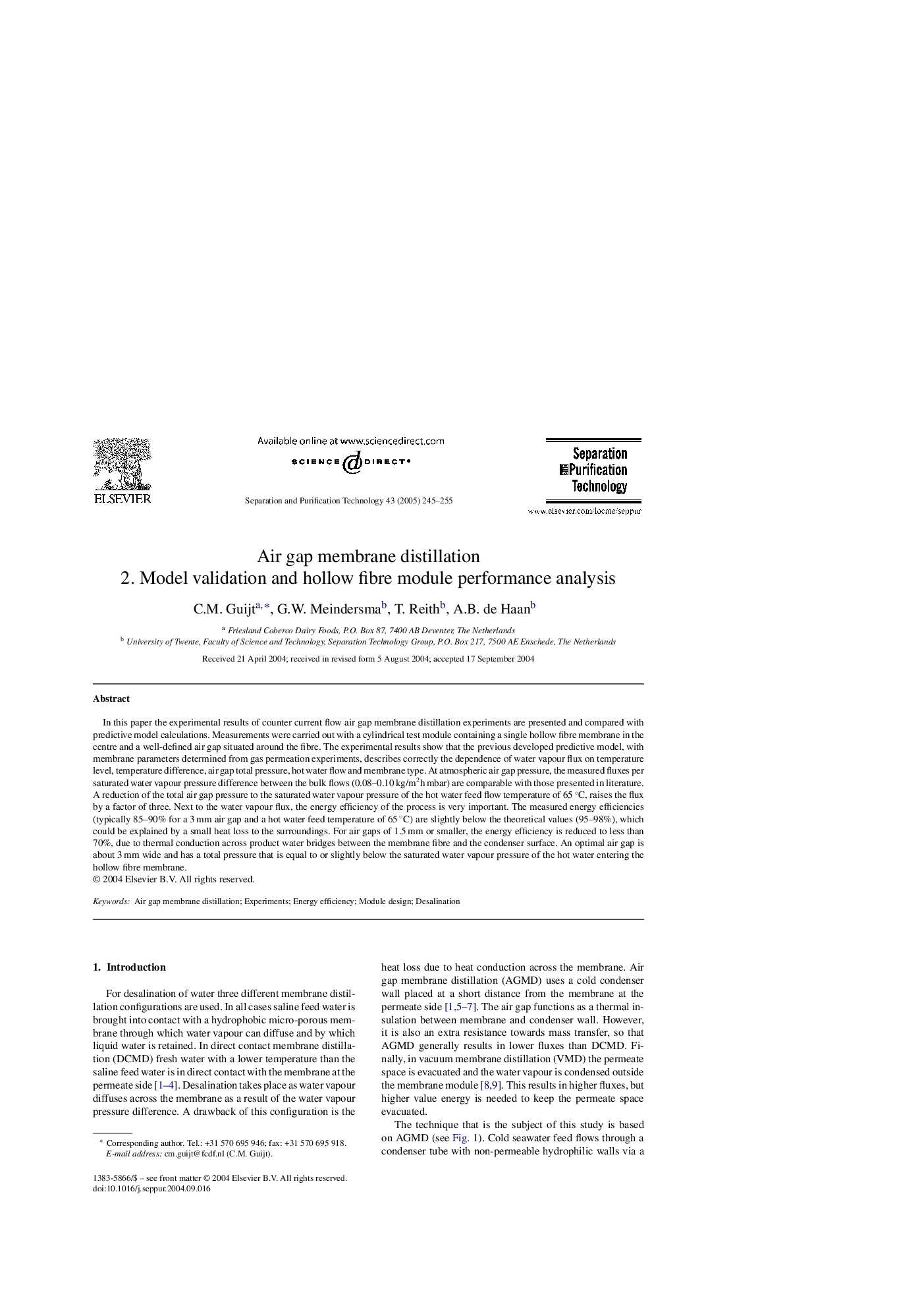| Article ID | Journal | Published Year | Pages | File Type |
|---|---|---|---|---|
| 10389828 | Separation and Purification Technology | 2005 | 11 Pages |
Abstract
In this paper the experimental results of counter current flow air gap membrane distillation experiments are presented and compared with predictive model calculations. Measurements were carried out with a cylindrical test module containing a single hollow fibre membrane in the centre and a well-defined air gap situated around the fibre. The experimental results show that the previous developed predictive model, with membrane parameters determined from gas permeation experiments, describes correctly the dependence of water vapour flux on temperature level, temperature difference, air gap total pressure, hot water flow and membrane type. At atmospheric air gap pressure, the measured fluxes per saturated water vapour pressure difference between the bulk flows (0.08-0.10 kg/m2h mbar) are comparable with those presented in literature. A reduction of the total air gap pressure to the saturated water vapour pressure of the hot water feed flow temperature of 65 °C, raises the flux by a factor of three. Next to the water vapour flux, the energy efficiency of the process is very important. The measured energy efficiencies (typically 85-90% for a 3 mm air gap and a hot water feed temperature of 65 °C) are slightly below the theoretical values (95-98%), which could be explained by a small heat loss to the surroundings. For air gaps of 1.5 mm or smaller, the energy efficiency is reduced to less than 70%, due to thermal conduction across product water bridges between the membrane fibre and the condenser surface. An optimal air gap is about 3 mm wide and has a total pressure that is equal to or slightly below the saturated water vapour pressure of the hot water entering the hollow fibre membrane.
Related Topics
Physical Sciences and Engineering
Chemical Engineering
Filtration and Separation
Authors
C.M. Guijt, G.W. Meindersma, T. Reith, A.B. de Haan,
